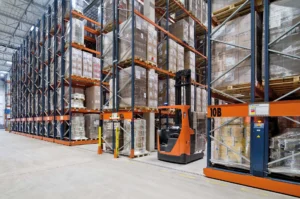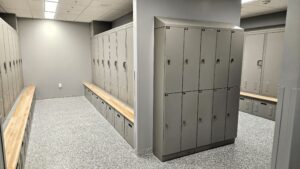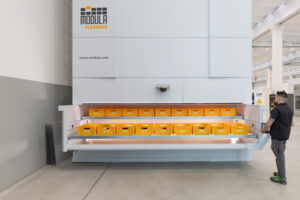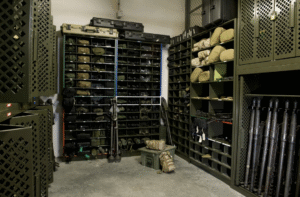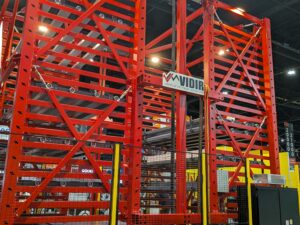Libraries serve as knowledge hubs for students, researchers, and book lovers, but managing large collections and archives while maintaining an accessible and well-organized space can be challenging. With evolving library layouts and increasing demands for flexible study areas, space efficiency has become a top priority.
Cantilever library shelving is a modern, adaptable library storage solution that maximizes space without compromising accessibility. Unlike traditional static shelving, it is designed for flexibility, durability, and ease of reconfiguration, making it ideal for libraries looking to improve storage efficiency and user experience.
This blog explores how cantilever shelving optimizes space, enhances accessibility, and supports modern library environments while ensuring efficient collection management.
The Challenge of Space Efficiency in Libraries
Libraries are no longer just repositories for books; they have transformed into multifunctional spaces that accommodate digital learning, study zones, community events, and collaborative workspaces. However, as collections grow and space becomes a premium, traditional shelving methods often fail to optimize available square footage.
Key challenges libraries face include:
- Limited floor space for growing collections
- Inflexible shelving that restricts reconfiguration
- Cluttered aisles that reduce accessibility
- Balancing book storage with seating and work areas
Cantilever library shelving is designed to address these issues, making it an efficient and scalable solution for modern libraries.
How Cantilever Shelving Maximizes Space Efficiency
Vertical Storage Optimization
One of the biggest advantages of cantilever shelving is its ability to maximize vertical space. Unlike bulky, traditional shelving that consumes unnecessary floor area, cantilever systems utilize an open-frame design to store more books in a compact footprint.
- Higher shelving configurations allow libraries to store more books per unit of space.
- Adjustable shelves accommodate various book sizes, ensuring no wasted vertical space.
- Narrower aisle widths provide greater storage density without reducing accessibility.
By leveraging vertical storage, libraries can increase their shelving capacity without expanding their footprint.
Flexible and Modular Design
Unlike rigid shelving systems that limit adaptability, cantilever shelving is modular, meaning it can be reconfigured, expanded, or relocated as library needs evolve.
- Adjustable shelves allow for easy reorganization to accommodate different materials, from oversized books to archival collections.
- Modular design enables libraries to expand shelving incrementally rather than overhauling their storage layout.
- Rolling or mobile shelving options offer additional space-saving configurations, making reconfiguring areas for different functions easy.
This adaptability ensures that libraries remain flexible in managing space, supporting future growth and layout changes.
Improved Accessibility and Organization
An efficient library shelving system should save space and enhance organization and accessibility. Cantilever shelving is designed for ease of use, making it simpler for library staff and visitors to locate, retrieve, and return books.
- Clear sightlines improve navigation and make collections more visually accessible.
- Customizable labeling and dividers allow for logical organization based on subject matter, genre, or frequency of use.
- Integrated display shelving provides opportunities to highlight featured collections or new arrivals without requiring additional furniture.
By creating a well-organized, intuitive layout, libraries can improve circulation flow and enhance user experience.
Enhancing Multi-Use Library Spaces
Problem: College campuses process hundreds of packages daily for students, faculty, and administrative offices, leading to lost packages, long pickup wait times, and overcrowded mailrooms.
Solution: Smart university lockers streamline mailroom operations, allowing students to retrieve packages 24/7 without waiting in lines.
Benefits:
- Eliminates lost or misplaced packages
- Reduces campus mailroom congestion
- Provides secure storage for important documents
Healthcare & Pharmaceutical Facilities
Libraries today serve multiple functions beyond housing books. They provide:
- Quiet study zones
- Group collaboration areas
- Digital resource centers
- Event and programming spaces
Cantilever shelving supports this shift by creating a more efficient, adaptable library environment:
- Mobile and reconfigurable units allow room layouts to be easily adjusted for events or study groups.
- Open-back shelving creates a more spacious, inviting atmosphere by allowing light and visibility through shelving units.
- Integrated seating and work surfaces can be incorporated into shelving configurations, making better use of available space.
By freeing up square footage for these activities, libraries can better serve modern user needs while still maintaining ample storage capacity.
Why Choose Bradford Systems for Cantilever Library Shelving?
At Bradford Systems, we provide high-quality, customizable cantilever shelving solutions designed to:
- Maximize library space efficiency without compromising accessibility.
- Enhance storage flexibility with adjustable, modular shelving configurations.
- Improve durability and aesthetics with premium materials and custom finishes.
- Support evolving library needs by creating adaptable, multi-use storage solutions.
Our team works with public libraries, academic institutions, and research centers to design shelving solutions that meet specific space requirements and collection sizes.
Are you looking to optimize your library’s storage capacity? Contact Bradford Systems today to explore our cantilever library shelving solutions and transform your library into a more efficient, organized, and accessible space.


